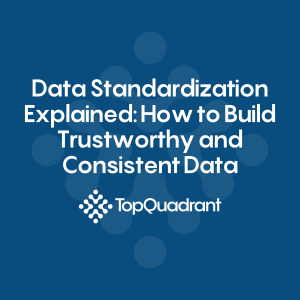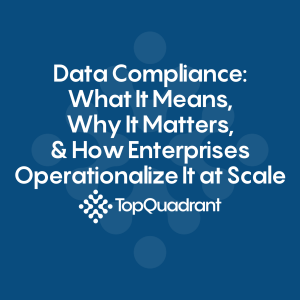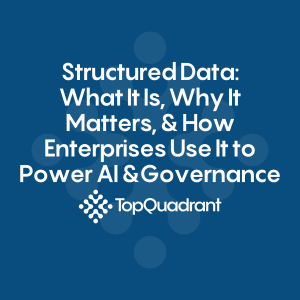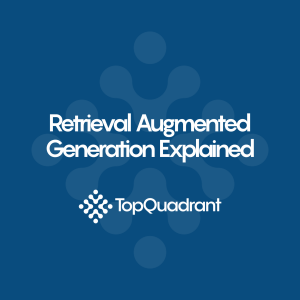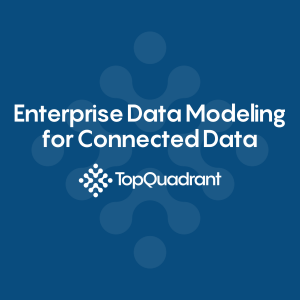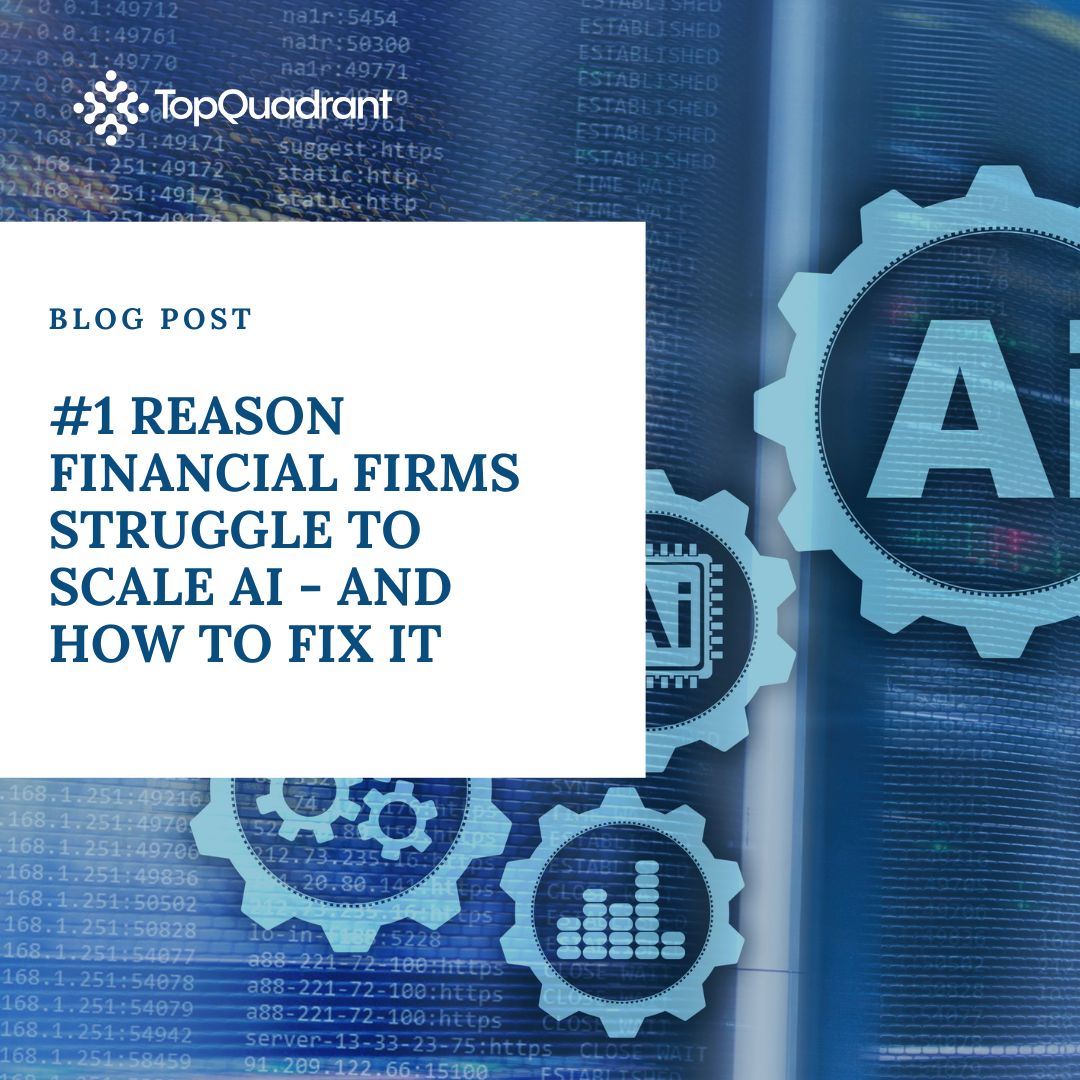Blog | Bridging Governance and AI: 5 Practical Strategies for Scalable Semantic Data Architecture
Summary: Building semantic knowledge graphs faster with AI, and embedding AI governance directly into the data layer speeds up time-to-value for semantic data governance.
This post answers the following questions:
- How can AI accelerate building a semantic data governance?
- How does a semantic data governance strategy accelerate AI projects?
- What is the benefit of embedding governance into the AI data layer?
- How can metadata activation improve interoperability?
- How does a knowledge graph facilitate AI data governance?
In today’s enterprise landscape, there is intense pressure to get high-value AI use cases into production. But here’s the tension: successful AI projects demand strong data governance, and good governance has traditionally been slow, complex, and resource-intensive. The work of capturing business context, metadata, and policies – critical for ensuring trust, explainability, and compliance – has too often resulted in shelfware instead of real outcomes.
What’s different now is that AI can help accelerate this foundational work. By using AI to build knowledge graphs and similar technologies that surface relationships, suggest classifications, and enrich semantic models, AI is reducing the manual lift of building governed, AI-ready data platforms to deploy solutions fast, safely, and accurately.
In a world where models drift, data changes, and regulatory expectations evolve, investing in an intentional, semantic data architecture is what allows organizations to move fast and build right. It’s the difference between scaling AI in a way that’s fragile (like all the POCs that we’re hearing that don’t make it to production) — and scaling in a way that lasts.
With that in mind, here are five practical steps to accelerate time-to-value in your data governance and ultimately your AI efforts:
1. Add Governance Directly Into the AI Data Layer
AI is not just for analytics–it’s becoming essential to data governance itself. Enterprises demand AI-ready data, but what does the process of building AI ready data look like? A semantic data governance approach helps build meaning and policy directly into the AI layer, making your data AI ready at its foundation.
Using semantic metadata management to embed context from business glossaries, ontologies, and taxonomies, as well as from policies such as GDPR, HIPPAA, and Basel alongside your data increases the time-to-value of any AI project. From classifying content according to your business meaning, and linking entities that help surface related assets, to tracking compliance for lineage and provenance, AI can enrich your metadata that AI Agents will need.
Data governance deployed directly in the data layer is especially impactful for use cases involving unstructured data decomposition, entity resolution, and term alignment. When governance achieves near real-time access to the latest business terms and policies, it becomes intelligent governance–faster and more sustainable at scale. A knowledge graph approach can facilitate governance in the AI layer.
2. Leverage Pre-Built Policy Models
Waiting six months to translate regulations into technical rules is no longer necessary. Today’s platforms support automated policy management by offering pre-structured, machine-readable interpretations of policies like GDPR. That means you can start piloting compliance use cases almost immediately, without legal reviews slowing down your technical roadmap.
Pre-built policy models are a key enabler of compliance automation, allowing data stewards to move faster while still maintaining the necessary rigor around data compliance–guardrails that support innovation.
3. Automate Taxonomy and Controlled Vocabulary Creation
One of the biggest early hurdles in any data governance framework is building alignment—especially around terminology. Instead of manually creating glossaries from scratch, look for tools that use AI to extract business terms directly from internal documents and systems.
This kind of AI automation of taxonomies, ontologies, business glossaries and other controlled business vocabularies accelerates early understanding, reduces ambiguity, and frees governance teams to focus on reviewing edge cases instead of hand-curating everything. It’s also a powerful way to enable data stewardship tools to deliver value faster.
4. Bring Your Ontologies With You
Many teams already have ontologies, domain-specific models, or even spreadsheets acting as de facto glossaries and taxonomies. The data management challenge is operationalizing ontologies.
New semantic data catalog capabilities let you plug these models directly into live workflows, without months of translation or refactoring. This makes semantic modeling not just a design activity but a functional asset that drives real-time governance decisions and strengthens reference data management.
5. Activate Metadata between Existing Systems
Time-to-value improves dramatically when enterprise data governance becomes the connective tissue between existing systems–and not just another silo.
Instead of duplicating effort across platforms, import metadata, business terms, and policy definitions directly from tools like SharePoint, Adobe Experience Manager, and Databricks into a unified semantic layer; then push updates back out to other business critical data systems. Activating metadata helps keep your shared business language consistent and up-to-date.
When data governance allows for active metadata, this supports alignment, maintains business logic, and creates a consistent foundation across structured and unstructured data. Metadata interoperability also reduces redundancy, enhances data observability, and helps you evolve toward scalable models like enterprise data fabric and data mesh architectures, without disrupting your team’s existing workflows.
The Bottom Line: Leverage New Data Governance Tools
Improving time-to-value isn’t just about faster deployments. It’s about enabling teams to focus on what matters—like improving data quality, delivering insights, and reducing risk—without spending months on setup. Interjecting governance into the data layer is key to building an AI-ready data foundation. With the right mix of automation, integration, and policy-ready tooling, organizations can go from theory to impact in record time. These modern data governance tools are available today, and growing exponentially. Knowledge graph does provide an agile framework to scale governance.
Learn more about how TopQuadrant’s flagship product, TopBraid EDG, helps organizations stand up governance use cases quickly, connect systems effortlessly, and deliver on time-to-value.
-
Data Governance69
-
Vocabulary Management9
-
Knowledge Graphs44
-
Ontologies15
-
Data Fabric8
-
Metadata Management21
-
Business Glossaries6
-
Semantic Layer12
-
Reference Data Management7
-
Uncategorized2
-
Data Catalogs16
-
Datasets11
-
Taxonomies4
-
News5
-
Policy and Compliance6
-
Life Sciences6
-
Automated Operations6
-
Financial Services10
-
AI Readiness25
-
Podcasts1
